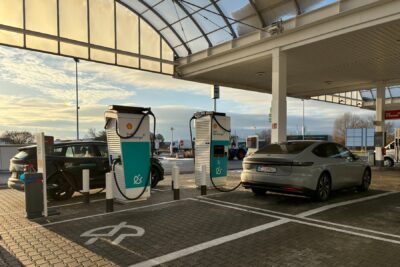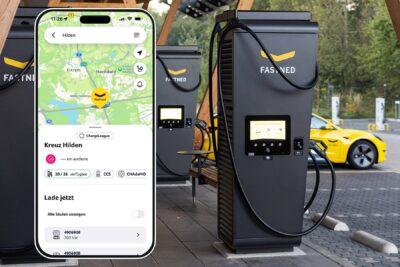“Beyond Hardware: Smart Charging at Scale” – Marcel Rümenapf from Siemens eMobility
Europe is on a slow but steady path towards electrifying its heavy-duty transport sector. Marcel Rümenapf, Head of Sales Europe at Siemens eMobility, estimates there are around 6,000 electric trucks currently operating on European roads. “That’s a drop in the ocean compared to the six million trucks still powered by combustion engines,” he said during our online conference electrive LIVE. However, new registrations are rising, with electric trucks expected to account for 3.5–3.6% of all new registrations in 2025, up from 2.3% in 2024.
Rümenapf emphasised the need for forward-thinking charging solutions. “The question going forward is where you want to charge: in public or on-site,” he explained. Siemens’ work with partners like Nanno Janssen illustrates what is possible. Nanno Janssen’s depot is equipped with ten 300-kW chargers for 20 electric trucks. The chargers are powered by solar panels and even a wind turbine. According to the Siemens manager, it demonstrates the potential for integrated microgrid systems. “It’s about taking charging to the next level,” Rümenapf said.
The challenge ahead lies in the choice of charging strategy. Operators must decide between public and depot-based charging. “In the past, that question didn’t really come up, because there were hardly any public charging possibilities. Now we have programmes such as AFIR from the EU, pushing public charging forward,” he said. Depot charging can offer operational advantages but requires careful planning. “Space is expensive, uptime must be high, and electricity costs need to be optimised.”
From the depot perspective, Rümenapf outlined the importance of service, interoperability and load management. “Remote diagnostics, fast response times and qualified personnel are critical. And interoperability between trucks, chargers and backend systems is essential to avoid operational hiccups.” Smart scheduling and energy management, he said, will become key, particularly for fleets with significant charging needs.
Scaling up: lessons from Sligro and OMV
Siemens is already applying these principles in practice. At Sligro in the Netherlands, 70 electric trucks are charged at 36 points powered by 12 chargers, delivering a combined 2.2 MW. The site also operates a refrigerated warehouse with a peak demand of 1 MW. This results in a total load of 3.2 MW, while the available grid connection provides only around 2.2 MW, plus an additional 300 kW from photovoltaic panels.
To bridge this gap, Siemens implemented an advanced energy management system that balances supply and demand in real time. “Without such orchestration, the fleet could not operate reliably within the grid limits,” Rümenapf explained. The system ensures that trucks are charged on schedule while keeping the facility’s overall load within capacity. It also integrates renewable generation, using solar power whenever available to cut costs and emissions.
“This is where energy management becomes mission-critical,” Rümenapf stressed. By optimising load distribution, Sligro guarantees high uptime for both the logistics operation and the chilled warehouse. The project also shows how fleet operators can avoid costly grid upgrades through intelligent software. According to Siemens, the Dutch case proves that large electric fleets are feasible even under constrained grid conditions, provided that charging and energy use are tightly coordinated.
Siemens is also working with OMV in Austria to install high-power 400 kW chargers along highways, addressing the unique needs of truck charging. “These chargers maintain full power throughout the charging cycle — something many current chargers cannot,” the manager explained.
Looking ahead, Rümenapf believes the conversation will shift. “After megawatt charging and the MCS standard, discussions will move beyond power ratings to topics such as cybersecurity, operational efficiency, and holistic energy solutions,” he said. For Siemens, the path forward will combine innovation in infrastructure with intelligent depot and network management to make electric trucking viable at scale.





0 Comments